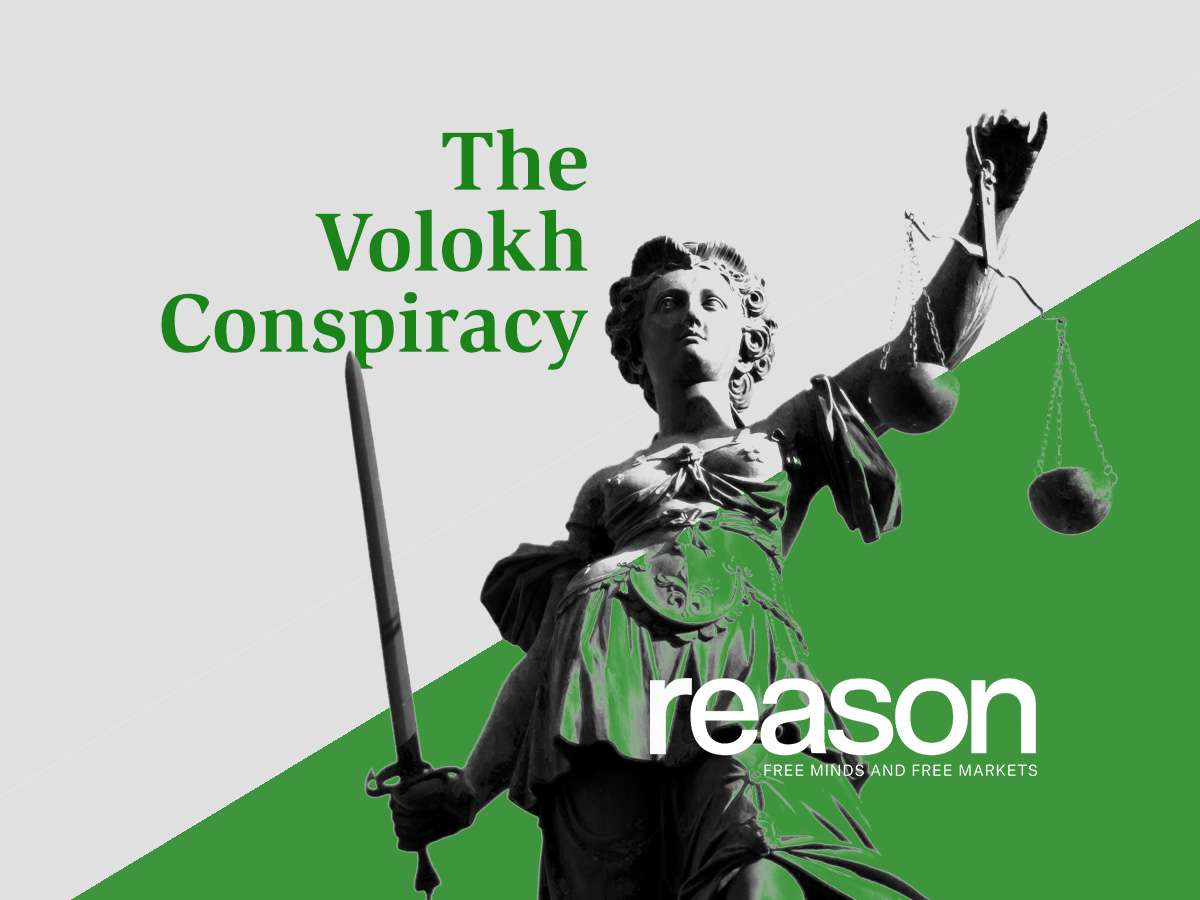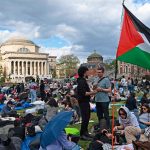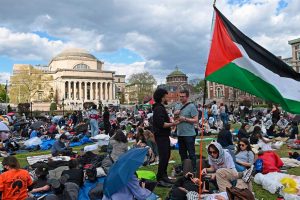
From Judge Pedro Delgado-Hernández’s opinion today in Rodriguez-Cotto v. Perluisi-Urrutia (D.P.R.):
Article 5.14(a) criminalizes, after the Governor of Puerto Rico has decreed by executive order an emergency or disaster, to knowingly, purposely or recklessly: (1) give a warning or false alarm, knowing that the information is false, in relation to the imminent occurrence of a catastrophe in Puerto Rico; or (2) disseminate, publish, transmit, transfers or circulate through any means of communication, including the media, social networks, or any other means of dissemination, publication or distribution of information, a notice or a false alarm, knowing that the information is false, when as a result of that conduct it puts the life, health, bodily integrity or safety of one or more persons at imminent risk, or endangers public or private property. Properly read, Article 5.14(a) does not survive strict or intermediate scrutiny….
The court reasoned that the proper remedy was generally for the government to rebut false rumors, not to criminalize them:
[T]he Government did not prove why counter-speech in the form of increased transparency, would fail to accomplish its interests. The Government states that during the state of emergency, a person caused disruption in the food supply chain by falsely announcing that the government would close the food markets, and that although the Government clarified that this was false, the damage was done. But the Government did not submit evidence on who, when and how it sought to address the false message to which it has referred in order to allow the court to gauge the effectiveness of the response. Inversely, plaintiffs submitted clippings of articles about a message regarding closure of supermarkets on the island due to coronavirus, showing the Government has failed to demonstrate that increased transparency would not accomplish its objectives.One of these articles states that on Friday (March 20, 2020), a person who identified himself as an active member of the church “Casa de Restauración,” claimed that Governor Vázquez was preparing to announce a total closure of all businesses, as well as ports; and on March 21, thousands of people filled commercial outlets to buy supplies. The article quotes the Secretary of State of Puerto Rico as denying that supermarkets would close (“Of course not. How are we going to do that?”). Additionally, it quotes the Secretary of the Department of Public Safety as saying, among other things, “as for the WhatsAp message, we do not deny or confirm,” and that the government kept an active page to report and evaluate complaints of people who used the media to commit crimes.
If that is how events unfolded, rather than qualifying as transparent, the information originating in government sources was contradictory, e.g. denying, while at the same time, neither denying nor confirming. {It bears noting that on March 30, 2020, among other things, the Governor limited food purchases between 5:00 a.m. and 7:00 p.m.; ordered that supermarkets and small grocery stores be closed on Sundays; and that the Department of Natural and Environmental Resources issue orders, guidelines, and circular letters for the closure of all marinas in Puerto Rico. See, Executive Order 2020-029. An article dated April 6, 2020, titled “Puerto Ricans crowd supermarkets as government ramps up restrictions,” relates that Puerto Ricans flocked to grocery stores the morning of April 6th, after the Governor announced the previous night stricter regulations for the island’s coronavirus lockdown during Holy Week, ordering almost all business including supermarkets and banks to close from Friday to Sunday }
And the purpose of the page that the Secretary mentioned was to report and evaluate complaints, not to place accurate and reliable information before the public. The Government counters that when falseness travels fast, the truth will never be able to reach it on time. However, as Tompros et al. point out, in the wake of the Boston Marathon bombing there was a good deal of false information spreading on various social media platforms, but using those very same platforms, the Boston Police Department (“BPD”) quickly refuted and corrected the misinformation. The BPD tweeted an accurate casualty number in response to inflated reports, refuted rumors that a fire at the John F. Kennedy Presidential Library was related to the bombing and corrected another rumor that a Saudi man had been arrested.
From this perspective, instead of criminalizing speech, the Legislature could simply have required the Government to use its multiple communications platforms to present a complete and accurate description of the facts. As Justice Kennedy pointed out in Alvarez, “[t]he remedy for
speech that is false is speech that is true . . . [t]he response to the unreasoned is the rational; to the uninformed, the enlightened; to the straightout lie, the simple truth.” Justice Breyer agreed with Justice Kennedy that in this realm, “more accurate information will normally counteract the lie.” For Justice Breyer, it was likely that a more narrowly tailored statute combined with information-disseminating devices would effectively serve the statute’s end. So too with Article 5.14(a). The dynamics of free speech, counter-speech, and refutation can effectively overcome lies. Under these circumstances, there was no clear showing that Article 5.14(a) is necessary to accomplish its stated purpose….
The court concluded that certain other false statement bans, even if constitutional, were narrower than the Puerto Rico ban:
[Title 18 U.S.C. § 1038] prohibits engaging in any conduct with intent to convey false or misleading information under circumstances where such information may reasonably be believed and the information indicates that an activity has taken, is taking, or will take place that would constitute a violation of certain enumerated statutes dealing with, among other things, destruction of aircraft and motor vehicles, biological and chemical weapons, improper use of explosives, improper use of firearms, destruction of shipping vessels, acts of terrorism, sabotage of nuclear facilities, and aircraft piracy. Such hoaxes are designed to instill fear in the public or other target and pose a serious threat to the public’s safety. In this context, the false statements “are very likely to bring about” the harm to be prevented.The F.C.C.’s broadcast hoaxes rule provides that no licensee or permittee of any broadcast station shall broadcast false information concerning a crime or a catastrophe if: (1) the licensee knows this information is false; (2) it is foreseeable that broadcast of the information will cause substantial public harm; and (3) broadcast of the information does in fact directly cause substantial public harm. For purposes of this rule, “public harm” must begin immediately, and cause direct and actual damage to property or to the health and safety of the general public, or diversion of law enforcement or other public health and safety authorities from their duties. The public harm will be deemed foreseeable if the licensee could expect with a significant degree of certainty that public harm would occur. Meanwhile, a “catastrophe” is a disaster or imminent disaster involving a violent or sudden event affecting the public.
Contrary to Section 1038(a) and the F.C.C.’s broadcast hoaxes rule, which identify the events to which the false report must refer, the second clause is open-ended, prohibiting dissemination in a variety of ways of a notice or a false alarm knowing that the information is false if it puts life, health, bodily or safety of one or more person(s) at imminent risk or endangers public or private property. But it is silent as to the content of the alarm or notice. In other words, it leaves people wondering, a notice or false alarm of what? Furthermore, it does not require that speech be likely to result in injury or damages and that such harm be imminent, that is, begin immediately after the speech. The Government did not show why a narrower statute would be insufficient to protect its interests. The level of generality hinders Article 5.14(a)’s ability to fall into one of the historical categories in which false speech has been held unprotected by the First Amendment….
The Government invokes Justice Holmes’ observation in Schenck v. U.S. (1919), to the effect that “[t]he most stringent protection of free speech would not protect a man in falsely shouting fire in a theater and causing a panic.” It suggests the same formulation applies here because Article 5.14(a) deals with falsehoods and the power of the government to punish such speech involves careful consideration of proximity and degree of the harm. The falsehood that Justice Holmes has in mind connects very closely, directly, and foreseeably to a highly particularized material harm. But as discussed earlier, that is not the case with Article 5.14(a).
These are just some excerpts; for more, read the full opinion. Congratulations to Brian Hauss (ACLU) and Fermin Luis Arraiza-Navas (ACLU of P.R.), who represent the challengers.



